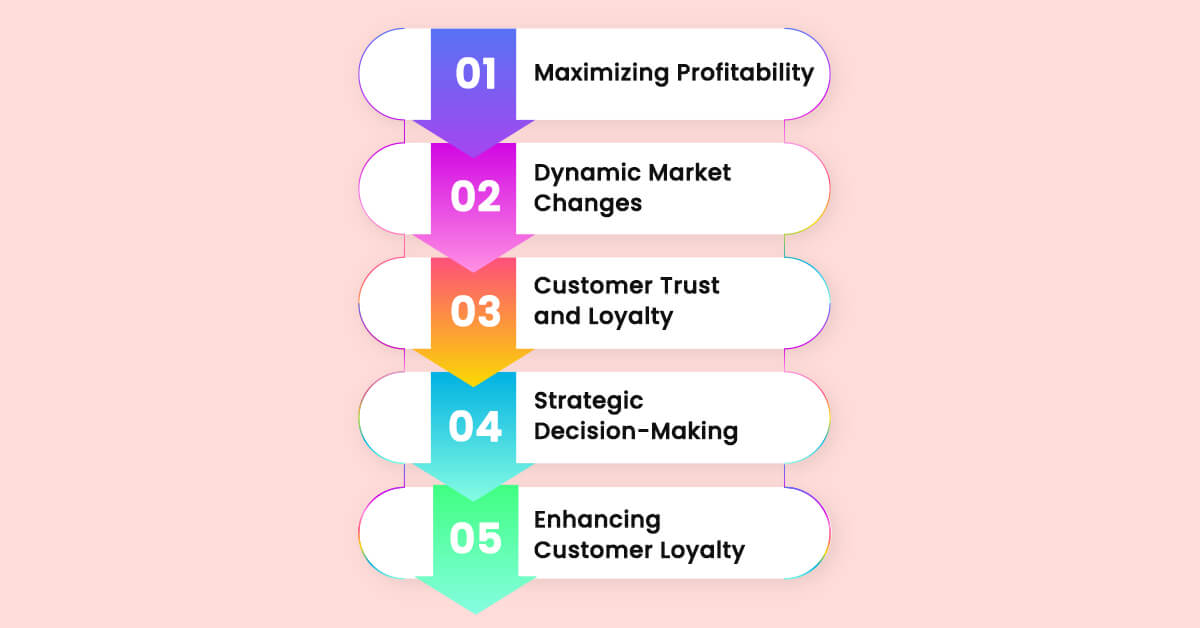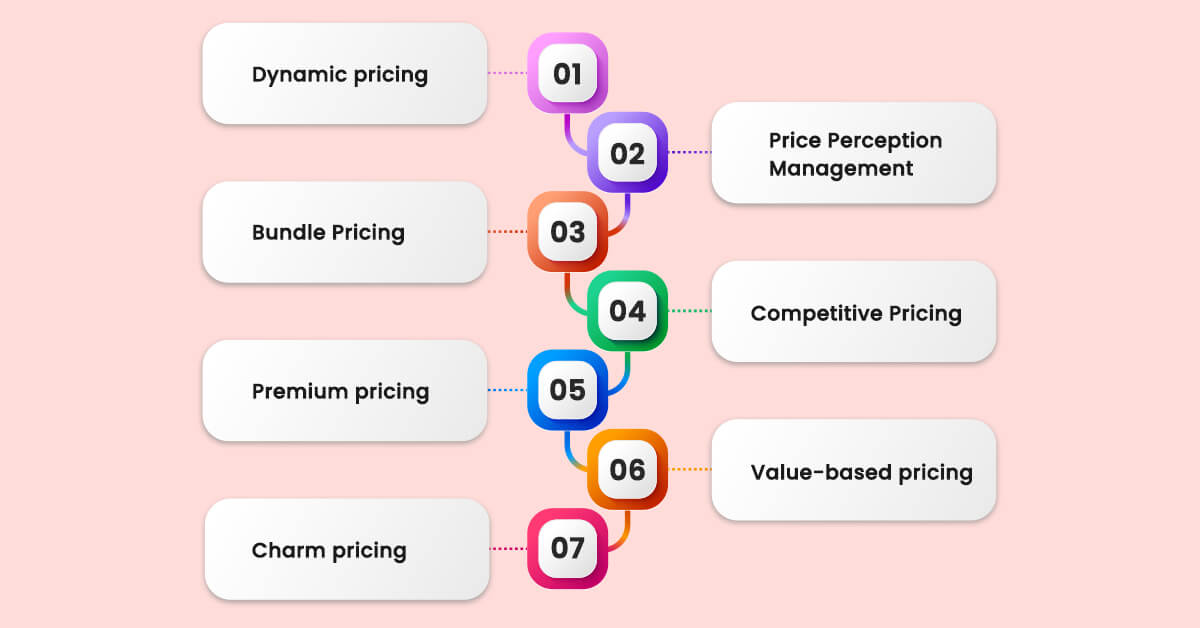In the booming e-commerce era, pricing intelligence has become crucial for businesses to succeed. Price is extremely important in the constantly changing world of e-commerce. It can either make a firm successful or cause it to stagnate. In this changing world, it is essential for firms to learn how to price their products effectively.
Setting prices used to be simple, but now it requires careful analysis of market trends, consumer behavior, and what competitors are doing. Businesses need to research factors like demand, costs, and what customers think things are worth. They also need to keep an eye on what their competitors are charging and be ready to adjust their prices quickly.
What is Price Intelligence?
Price intelligence is about gathering, studying, and understanding pricing information to help companies make smart decisions about how much to charge for their products or services. This means looking at what other companies are charging, what trends are happening in the market, and how customers behave when prices change. By knowing all this, companies can change their prices to make the most money and stay competitive. Keeping an eye on price data helps businesses react quickly when things in the market change, which keeps them ahead of other companies. Basically, having good price information is really important for companies that want to make the best pricing strategies and do well in today's challenging market.
Obtaining pricing information requires knowing what other firms charge for comparable items, what consumers are willing to pay, and current market trends. Businesses may utilize this information to make smart pricing decisions.
Businesses using pricing intelligence may quickly adjust their prices. If a competitor lowers its prices, they may follow suit to attract more customers.
Alternatively, firms can raise prices to generate income if they discover that customers are willing to pay more for a certain product. Price intelligence requires the constant collection and examination of pricing data. By monitoring changes, businesses may detect and capitalize on industry patterns and trends.
Understanding E-commerce Pricing Strategies
E-commerce pricing strategies are methods used by online firms to set, alter, and maintain prices for their products or services over time. Strategies should consider the company's revenue targets, manufacturing costs, and KPIs such as customer lifetime value (CLV) and average order value (AOV).
Pricing is critical in every retail operation, whether online or offline. Developing a competitive pricing strategy is vital for increasing sales and profit margins. Businesses that keep an eye on market trends and understand customer behavior may establish pricing that appeals to customers while still making a good profit. Discounts or tiered pricing may help enhance sales. Continuous monitoring allows modifications to be made in response to market changes. This emphasis on competitive pricing enables organizations to prosper in today's changing environment. When setting prices, consider product demand, production costs, competitor pricing, local economic conditions, and marketing goals. To make a good pricing plan, you must know what an E-commerce pricing strategy is and how to use it to your advantage. When you know how pricing techniques work, you can use them to make a good price plan for your online store.
Why is Pricing Intelligence Important for E-commerce?

E-commerce businesses need Pricing Intelligence for many reasons. They need it to compete, make money, and succeed online.
Here's a breakdown of why pricing strategies in E-Commerce hold such significance in the industry:
Maximizing Profitability
In online businesses, making the most money involves always looking at what's happening in the market and checking what prices other businesses are putting on their stuff. This means changing your prices depending on things like how much people want something, the time of the year, and what customers tend to do. The goal is to set prices that give the product good value but also ensure lots of people buy it.
Dynamic Market Changes
Prices you see while shopping online might fluctuate for a variety of reasons. It relies on the quantity of a product, what customers desire, and what other businesses are doing. This adaptability enables online retailers to swiftly respond to developments and make wise decisions in order to stay ahead of their competition. So, when prices change, it's because online companies adapt to what customers want and what other stores do to stay competitive.
Customer Trust and Loyalty
Keeping prices constant and clear increases client trust in a firm. Pricing Intelligence, or being strategic about setting prices, assists e-commerce enterprises in ensuring that their prices are fair and in line with market expectations. When shoppers believe they're receiving a good price, their total shopping experience improves. This trust frequently leads to consumers returning and sharing with their friends about their excellent experience, which is essentially a free advertisement for the firm.
Strategic Decision-Making
Knowing about prices is similar to having a guide for making smart decisions in business. Whether a company wants to sell in a new place, launch a new product, or plan promotions, understanding how prices work is really important. It's a helpful tool that guides you to make excellent and successful choices. This understanding is necessary for unthinking decisions to be good for the business. So, having a clear idea of how prices work is crucial for making decisions that help a business do well and be successful.
Enhancing Customer Loyalty
Knowing about costs allows firms to develop unique initiatives to keep customers returning. When businesses understand what their consumers want and how they act, they can set pricing that are appropriate for each group. This makes consumers pleased and more inclined to remain around and continue purchasing from the company. Understanding what consumers want and how they want prices allows firms to make them feel unique, resulting in loyal customers who return.
Pricing Intelligence Strategies for E-commerce

Understanding E-commerce pricing strategy is crucial for businesses to stay competitive, boost profits, and provide satisfaction to customers. It serves as a critical element that helps businesses thrive, differentiate themselves in the market, and ensure customer happiness. In essence, having a solid grasp of pricing intelligence is essential for overall success in the business world.
Dynamic pricing
Dynamic pricing is a creative means of adjusting prices in response to market conditions. Businesses might adjust pricing to increase profits rather than charging the same amount every time. Prices may rise during peak periods, such as holidays or significant shopping days, particularly for popular items. Because more people demand those things, firms may charge higher prices. On the other hand, if there is a lack of interest in something, prices may fall in order to attract more buyers.
Price Perception Management
Price perception management ensures that your consumers accurately perceive the worth of your products or services. This entails employing many strategies to guarantee that viewers of your products or services see the product differently than it is. For example, you may include supplementary things or build packages to make a product look more appealing and useful than it is. Price perception management entails correctly marketing and labeling your items. A well-crafted sale label highlights certain product characteristics, such as an extended warranty or a promotional offer included with the purchase.
Bundle Pricing
Bundle pricing is one of the best pricing strategies in E-Commerce for increasing average order value and converting more clients. Bundling items allows you to provide additional value to customers while increasing earnings. This might enhance your sales because it encourages buyers to purchase both things rather than just the laptop. Customers will not have to consider purchasing the casing separately, as they would if they purchased the computer at its standard price.
Competitive Pricing
When you base your rates on your competitors' actions, you engage in competitive pricing. Since nobody likes to spend more than necessary, it might be a terrific strategy to make sure you stay competitive in the market. Regularly comparing prices actively helps you avoid being undercut while remaining appealing to clients, creating a win-win situation. Additionally, it aids in price perception management: customers may believe they are getting a good bargain on your goods if you keep your prices comparable to competitors.
Premium pricing
Companies that employ a premium pricing approach aim to maintain higher prices than their competitors. This can be combined with branding and advertising that explains to customers why the higher cost is appropriate. In order for a premium pricing strategy to be successful, sellers often need to combine new product qualities, a distinctive offering, and a strong brand image. Luxury brands such as Channel, Louis Vuitton, Apple, and Rolex are examples of corporations that employ a premium pricing approach.
Value-based pricing
Value-based pricing, also known as value-added pricing or perceived value pricing, is a successful strategy that requires a profound grasp of the market and the value your products offer to potential purchasers. Value-based pricing is a strategy that sellers may use to affect how customers perceive their products. Value-based pricing adoption requires careful study and alignment with your company's objectives, competition, and target market research. It can result in an obvious and successful pricing strategy, but it will need collaboration from everyone in the business.
Charm pricing
Charm pricing, also known as psychological pricing, is a creative method of determining prices to make people feel specific emotions and persuade them to buy. It's similar to how prices finish in ".99" or ".95" to make them appear cheaper and attract your attention. This strategy may be familiar to you from late-night infomercials that want you to buy something right now. However, charm pricing is wider than television; many shops also employ it. Charm pricing occurs when a price is slightly less than a whole number, such as $9.99 instead of $10. It's all about making you feel like you're getting a terrific bargain and encouraging you to buy right now.
Conclusion
E-commerce merchants may increase earnings and sales conversions with the correct price strategy. Cost-linked, introductory, dynamic, price perception management, competitive, and package pricing are all effective tactics that may be customized for your company and its development goals. To spot pricing trends and make wise pricing decisions, web scraping for price comparison will assist you in monitoring competition prices as well as data related to your own business. Increased revenue, lower inventories, and more customer satisfaction are all possible outcomes of this.
Tools for Pricing Intelligence for price strategies in E-Commerce can assist businesses in effective decision-making. Decide which one best suits your demands and financial situation. With Web Screen Scraping, a seasoned Price Intelligence Service provider, you can make the most out of all the data in your fashion firm. We can assist you with comprehending consumer demands and market trends.












